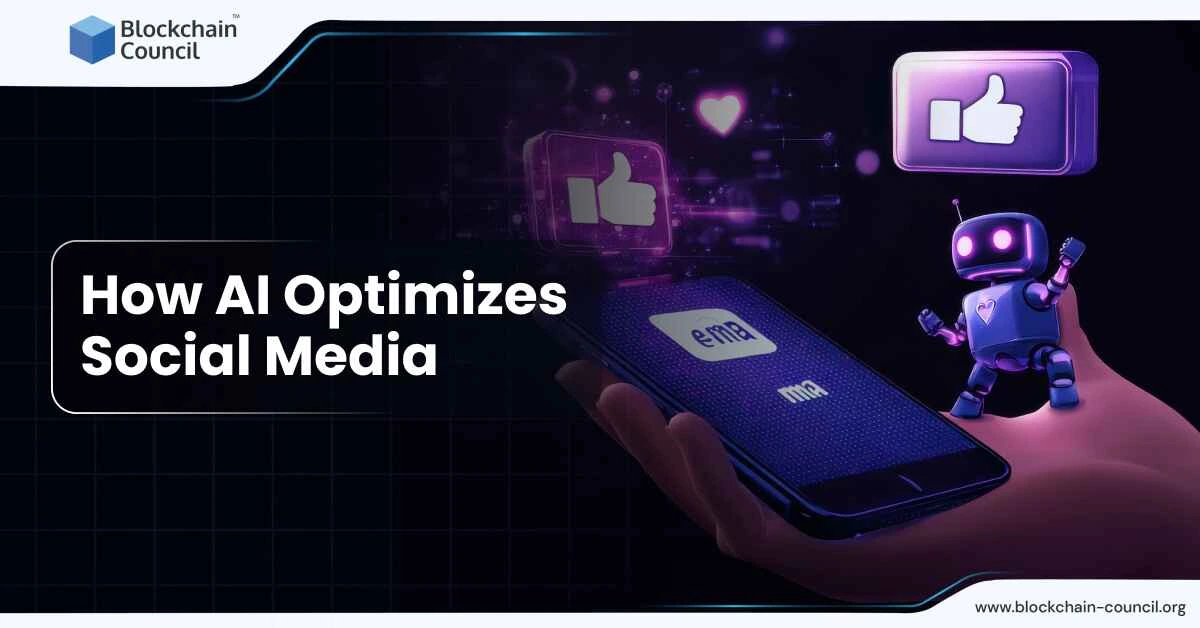
- Blockchain Council
- September 13, 2024
Summary
- AI content detectors are crucial tools in today’s digital landscape, ensuring content remains authentic and original.
- They utilize sophisticated algorithms to distinguish between human-written and AI-generated texts by analyzing linguistic patterns and syntax.
- These detectors play vital roles in academia, online moderation, SEO strategies, and compliance with Google’s policies.
- Despite advancements, they face challenges such as false positives/negatives and adapting to evolving AI technology.
- Burstiness and perplexity metrics pose challenges, as human writing exhibits variability not easily defined by thresholds.
- Running AI content detectors requires significant computational resources, limiting accessibility for smaller organizations.
- The future of AI content detection anticipates improved accuracy, integration of contextual understanding, and enhanced user experience.
- Collaboration between AI detectors and human reviewers will ensure alignment with editorial standards.
- Detectors will adapt to detect newer forms of AI-generated content, including videos, images, and interactive media.
In today’s rapidly evolving digital world, AI content detectors have emerged as essential tools for maintaining the integrity and authenticity of online content. With the rise of artificial intelligence in content creation, distinguishing between what’s written by humans and what’s generated by machines has become crucial. AI content detectors use sophisticated algorithms to analyze texts for signs of AI authorship. This article explores the world of AI content detectors. By the end of this article you will understand what AI content detectors are and how they work. We will also discuss their limitations and what the future holds for these tools.
What Are AI Content Detectors? Explained
AI content detectors are innovative tools designed to identify whether text has been generated by artificial intelligence (AI) or by a human. They have become crucial in various contexts, including academia, where educators use them to verify the originality of students’ work, and in online moderation, to filter out AI-generated spam or fake reviews.
These detectors rely on complex algorithms that compare input text against vast datasets of both AI-generated and human-written content. By analyzing the linguistic patterns, syntax, and other textual characteristics, they estimate the likelihood of a piece of writing being AI-produced. However, it’s important to acknowledge that while AI content detectors are advancing, they are not infallible and may sometimes give false positives or negatives.
Also Read: How Does Character AI Work?
How Does AI Content Detection Work?
AI content detection works through a combination of natural language processing (NLP) and machine learning algorithms. These technologies enable the detectors to analyze the text for specific markers that are indicative of AI generation, such as perplexity and burstiness.
- Perplexity measures the predictability of text. AI-generated content tends to have low perplexity, meaning it’s more predictable and less likely to confuse or “perplex” a reader due to its smooth, logical flow. In contrast, human writing often displays higher perplexity because of its unpredictable nature, including creative language use and occasional errors.
- Natural Language Processing (NLP) and Machine Learning (ML) algorithms are at the heart of AI content detectors. These technologies enable the analysis of linguistic patterns, syntax, and structure, comparing them against vast datasets of human and AI-generated texts.
- Burstiness refers to the variability in sentence structure and length. AI-written content usually exhibits low burstiness, with sentences often following a similar pattern and length. Human writing, on the other hand, tends to vary more in these aspects, reflecting the natural diversity of human expression.
Some AI detectors also employ watermarking techniques proposed by companies like OpenAI. These involve embedding invisible markers in AI-generated text, which can then be identified by detectors. However, this technology is still under development and not yet widely implemented.
Despite their sophistication, AI content detectors face challenges such as distinguishing between AI-edited human writing and purely AI-generated text. Their effectiveness can also be compromised by intentionally making AI output less predictable or by editing it post-generation.
Also Read: What is a Chatbot? A Complete Guide
Importance of AI Content Detectors
AI content detectors are crucial tools in today’s digital landscape. Here’s why:
- Enhancing Content Authenticity: They help ensure that the content across the web remains original and authentic, distinguishing between human-written and AI-generated texts.
- SEO and Content Strategy: With the growing emphasis on unique and quality content, these detectors play a vital role in shaping SEO strategies and maintaining high search engine rankings.
- Academic Integrity: In educational settings, they prevent plagiarism, encouraging students to develop original work and critical thinking skills.
- Content Monetization: For publishers and creators, ensuring content is human-generated can be essential for monetization policies on various platforms.
- Compliance with Google’s Policies: They help content creators adhere to Google’s guidelines, emphasizing the creation of trustworthy, authoritative, and expert content.
Limitations and Challenges
AI content detectors, while sophisticated and useful, are not without their limitations and challenges:
- False Positives and Negatives: One of the primary challenges is distinguishing with absolute certainty between AI-generated and human-written text. Despite advances, false positives (flagging human content as AI-generated) and false negatives (missing AI-generated content) still occur. This is partly due to the nuanced and evolving nature of language.
- Adaptability to Evolving AI: As AI technology continues to advance, keeping AI detectors up-to-date and capable of recognizing the latest AI writing patterns becomes a moving target. New models can produce text that is increasingly indistinguishable from human writing, challenging detectors to adapt quickly.
- Understanding Context and Creativity: AI detectors primarily analyze text based on patterns, syntax, and statistical norms. However, human writing is enriched with context, creativity, and subtleties that can be challenging for AI detectors to fully grasp. This limitation can lead to inaccuracies in detection.
- Burstiness and Perplexity: These metrics, while helpful, also present challenges. Burstiness reflects the variability in the frequency and distribution of words, while perplexity measures the predictability of word sequences. Both can vary significantly within human writing, making it hard to set definitive thresholds for detection without increasing false flags.
- Resource Intensity: Running sophisticated AI content detectors requires significant computational resources, especially as the volume of content to be analyzed grows. This can limit the accessibility and scalability of these tools for smaller organizations or individual creators.
Also Read: What are Agents in Artificial Intelligence (AI)?
The Future of AI Content Detection
The evolution of AI content detection is anticipated to be significant, with several key trends:
- Improved Accuracy through Advanced Algorithms: Future AI detectors will likely leverage more sophisticated algorithms, reducing false positives and negatives, and better distinguishing between human and AI-generated content.
- Integration of Contextual Understanding: Upcoming detectors may incorporate deeper contextual and semantic analysis, understanding not just the structure but the meaning and intent behind the text.
- Enhanced User Experience: As AI content detection tools become more mainstream, their user interfaces and feedback mechanisms will evolve to be more intuitive and helpful for content creators.
- Collaboration between AI and Human Review: The future will see a stronger collaboration between AI detectors and human reviewers, ensuring that content not only passes technical checks but also aligns with nuanced editorial standards.
- Adaptation to New Forms of AI-Generated Content: As AI technology evolves, so too will content detectors, adapting to detect newer forms of AI-generated media, including videos, images, and interactive content.
Also Read: What is Gemini AI?
Conclusion
As we conclude our exploration of AI content detectors, it’s clear that these advanced tools are not just technological marvels but guardians of authenticity in the vast ocean of digital content. They stand at the forefront of a critical balance, ensuring that the digital narrative remains genuinely human while embracing the efficiencies of AI.
Incorporating these advanced concepts into your content strategy not only elevates the quality of your digital presence but also ensures compliance with evolving SEO standards, marking your content as both authoritative and genuinely human. As AI continues to evolve, so too will the strategies to detect and appreciate the unique value that human insight brings to digital content, ensuring a rich, authentic, and engaging online world for all.
Frequently Asked Questions
What is an AI content detector?
- An AI content detector is a tool designed to identify whether a piece of text has been generated by artificial intelligence (AI) or by a human.
- It analyzes various linguistic aspects, including patterns, syntax, and structure, to make this determination.
- AI content detectors are crucial for maintaining the integrity and authenticity of online content in today’s digital landscape.
How do AI content detectors work?
- AI content detectors utilize sophisticated algorithms, including Natural Language Processing (NLP) and Machine Learning (ML), to compare input text against vast datasets.
- They examine metrics such as perplexity and burstiness, which measure the predictability and variability of text, respectively.
- These detectors analyze both AI-generated and human-written content to estimate the likelihood of AI authorship.
What are the limitations of AI content detectors?
- One limitation is the challenge of distinguishing with absolute certainty between AI-generated and human-written text, leading to false positives and negatives.
- AI detectors may struggle to adapt to evolving AI technology, as new models produce text that is increasingly indistinguishable from human writing.
- Understanding the context and creativity in human writing poses a challenge for AI detectors, which primarily analyze patterns and syntax.
- Running sophisticated AI content detectors requires significant computational resources, which may limit accessibility and scalability.
What is the future of AI content detection?
- The future of AI content detection includes improved accuracy through advanced algorithms, reducing false positives and negatives.
- There will be an integration of deeper contextual and semantic analysis to understand not just the structure but the meaning behind the text.
- Enhanced user experience is anticipated through more intuitive interfaces and feedback mechanisms.
- Collaboration between AI detectors and human reviewers will become more prominent, ensuring alignment with editorial standards and nuanced understanding.





































































 Guides
Guides News
News Blockchain
Blockchain Cryptocurrency
& Digital Assets
Cryptocurrency
& Digital Assets Web3
Web3 Metaverse & NFTs
Metaverse & NFTs
